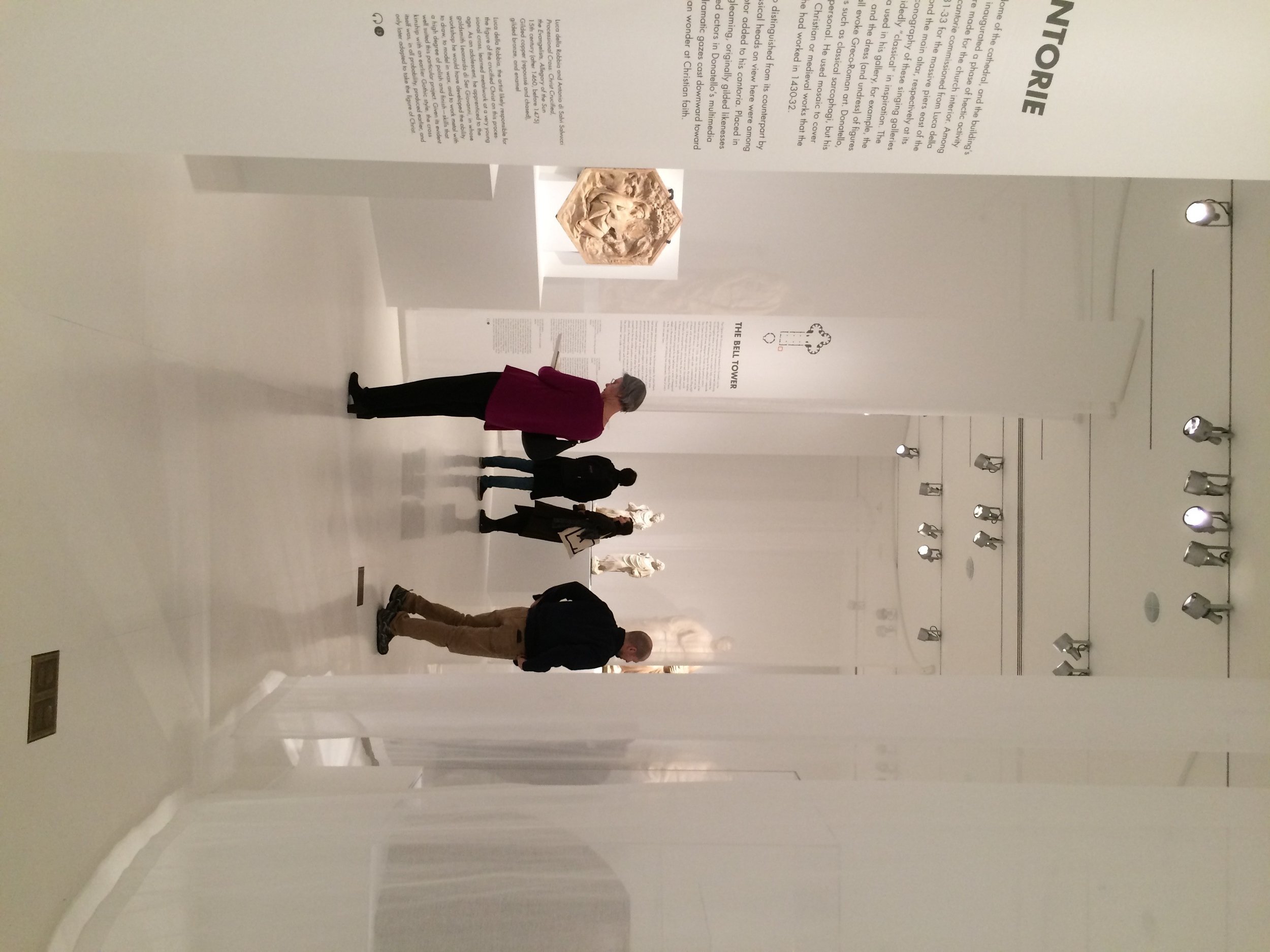"Sculpture in the Age of Donatello" opens at the Museum of Biblical Art
As the centerpiece of its 10th Anniversary celebration, the Museum of Biblical Art (MOBIA) resurrected “the author” with the unveiling of its latest exhibition: "Sculpture in the Age of Donatello," last Friday, Feb. 20. To honor the anniversary, MOBIA curated 23 religious Renaissance works, by Donatello, Brunelleschi and others, that have never been viewed outside Italy.
Timothy Vernon, Director of the Museo dell’Opera del Duomo, and Harvard-based Donatello scholar, Daniel Zolli partnered to execute a central vision for MOBIA: creating space for religious works of art to be re-viewed in light of their religious context. The pieces first decorated the façade and interior of the Florence Cathedral but have since inhabited the Museo dell’Opera del Duomo (sans religious context).
At the press conference Wednesday, Feb. 18, Vernon said the exhibition seeks to “overcome a kind of reticence in recent decades about publicly talking about the religious meaning of religious objects.” He also emphasized that these works “need to be discussed in the first place in light of their religious meaning, which almost certainly was one of the primary concerns of both the patron and the artist.”
This deliberate contextualization is missing from most museums, where a viewer’s experience with a work is usually prompted by little more than the location of the piece against a white wall. Sparked by the philosophy of Roland Barthes in the late 1960’s, many art-viewers separate the intention of an artist from one’s personal experience with the art. For Barthes, the author of a work is essentially dead and a viewer is free to disregard the original context and the author’s intention.
The cozy, rectangular room in MOBIA’s current exhibition glows with nothing but clean, white walls and transparent sheets to house the artworks—but contrary to Barthes, the MOBIA exhibition provides a more robust context for the viewer. The white sheets allow the viewer to consider the sculptures chronologically and according to the part of the cathedral they first decorated. Wooden models of the Florence Cathedral are stationed in the center of the room, allowing the viewer to connect a particular sculpture with a location in a church building. Statues of two disciples, Luke and John, are presented alongside a detailed description of how the original viewers would have experienced the biblical statues in the Florence Cathedral.
Vernon called these curatorial decisions a “a newly frank approach to the history of art… and a chance to allow the art to say what it was made to say, leaving everyone free to take what he or she wants to take.” MOBIA's attempt to provide historical, religious and authorial context for these famous works is a unique way to re-engage with an aspect of art-viewing that Barthes did away with, but that we, as pop-culture participants, have since longed to resurrect.
I’m thinking specifically of any impulse one has ever had to Instagram a compelling picture of snow-covered NYC brownstone stairs, for example. We seem to have a burning sense that the picture of stairs means something more than just a picture of stairs. Maybe we write a caption that includes an inspiring quote or we photograph it at a fresh angle. Perhaps they are the kind of stairs one hopes to carry his children up one day. Either way, our desire to contain our moment with the stairs and make it into something we can view and share for(seemingly)ever makes it less a picture of stairs and more a fleeting impression of something in which we believe. The story, artistic intention and context of that picture are all present in its meaning to us.
In the same way that the Instagram of stairs is not just an Instagram of stairs, the Donatello sculpture of a man about to kill a boy is not just a sculpture of a man about to kill a boy. It’s also a physical representation of Jewish and Christian biblical figures, a moment in a story in which Abraham begins to kill his only son, an image the boy Michelangelo would have seen as he crossed the piazza and approached the Florence Cathedral for mass. The fresh intention and power of "Sculpture in the Age of Donatello" is to ensure that the viewer has the opportunity to look at Donatello’s “Abraham and Isaac” and believe it to be any of these things, but never less.
"Sculpture in the Age of Donatello" will be on display at the MOBIA until June 14.



